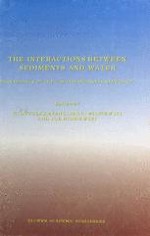1997 | OriginalPaper | Chapter
Flocculation of Particles by Fluid Shear in Buffered Suspensions
Authors : C. H. Tsai, J. Q. Hu
Published in: The Interactions Between Sediments and Water
Publisher: Springer Netherlands
Included in: Professional Book Archive
Activate our intelligent search to find suitable subject content or patents.
Select sections of text to find matching patents with Artificial Intelligence. powered by
Select sections of text to find additional relevant content using AI-assisted search. powered by
Flocculation experiments were carried out by using a Couette type of viscometer for applying uniform fluid shears to freshwater suspensions of estuarine fine-grained particles. The suspensions were buffered by a maleic acid/ammonium hydroxide system. The objectives of the study are to investigate the relationship between the steady-state sizes of flocculated particles and applied shear at various pH values. The results showed that the rate of particle flocculation increased with the addition of the buffer. With a particle concentration of 100 mg/1 and pH of 6.0, the floc size decreased with the increasing shear. While with a pH of 7.5, the floc size increased with the shear until it reached a maximum value at the shear of 400 s , and then the size decreased as the shear increased further to 500 s . The maximum size shear was found at 200 s−1 for pH 7.9. By increasing the pH value to 9.0, there was no particle growth with any applied shear. The electrophoretic mobility of the particles was measured. It was found that for any constant shear the floc size is inversely proportional to the absolute value of the mobility. That is, the more repulsive the force between particles, the smaller the floc size. The effect of pH on floc size was not uniform within the pH range tested. The results demonstrated that the higher the shear the more significant the changes of floc size due to the pH effect.
